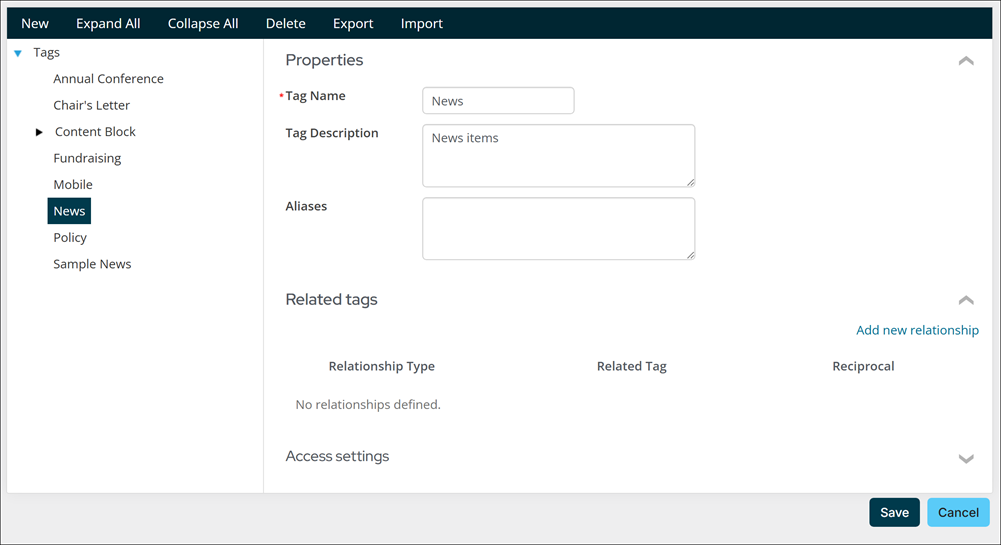Tags are a special type of keyword that you can associate with content records. Tags help generate more successful search results, and the automatic population of content based on tags. All descendants of a content folder inherit the tags defined for the content folder.
Advanced Search content items specify tags that your users can select to narrow their search to a smaller set of tagged content records.
Content Tagged List content items specify various tags that generate a real-time list of links to tagged content records when the content record containing the Content Tagged List is viewed.
Tagged list formats are used by Content Tagged List content items to format the rendered display of the list of links. The chosen tagged list format is applied as a display mask to each item in the list.
You cannot create ad hoc tags while defining content records. Instead, you must choose from a list of pre-defined tags that are usually defined by those who perform website management. This restriction ensures that your content is tagged with a centrally designed taxonomy, which provides more consistent and predictable search results.

Key features
- Manage multiple websites and allow chapters or affiliates to manage their own websites.
- Create content once and share the content across multiple websites.
- Assign and manage content management responsibility to individuals or groups within your organization.
- Using your organization's unique terms, audiences, and concepts:
- Categorize content and allow users to identify areas of interest.
- Allow keyword searches to be targeted.
- Deliver targeted web content to your constituents. You can also use contact, demographic and transactional data from within your iMIS database.
- Use a unified search option to search not only web content but also elements of your iMIS database, such as contacts, events, products, documents and more.